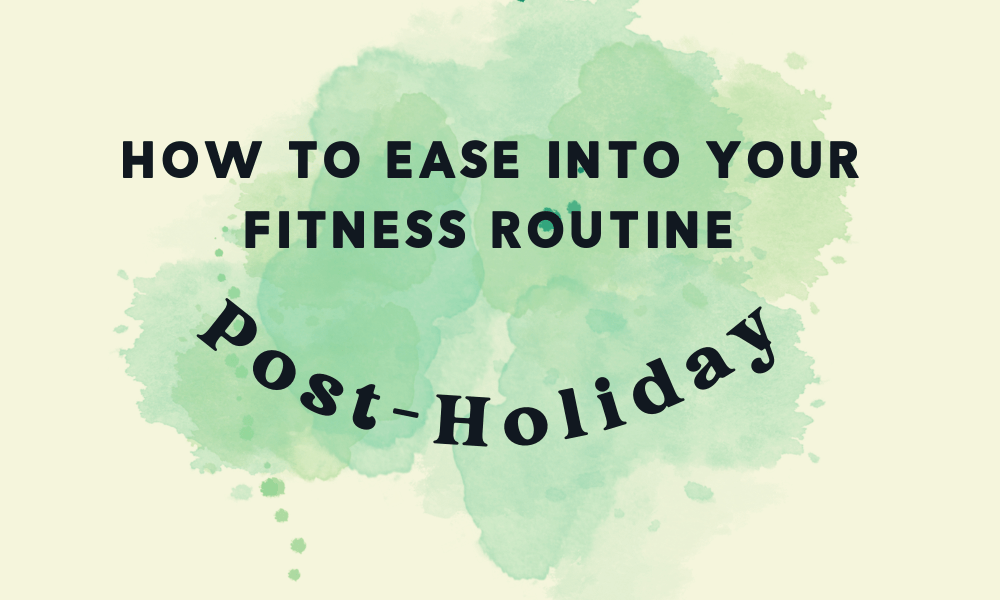
Don’t overdo it!
It’s only natural for you to be feeling a little guilty over the “cheat weeks” that you may have been having over the last few months. But that does not mean you should overexert yourself from the get-go!
After some time away from working out, your body will naturally decondition itself, regardless of how intense or frequent your previous sessions were.
It’s completely normal if you’re not able to run as far or as fast, lift as heavy or do as many reps as before. So do not be discouraged!
It’s important to remember that doing too much too soon can lead to injuries, which in turn could make you a lot less capable of getting back on track with your fitness routine. And we certainly wouldn’t want that.

When you get back into working out, remember to take it slow. Opt to start off with a 30-minute session first, either every day or every other day.
This will not only set the tone for working out on a regular basis again, whilst giving you the energy you need for the day.
Set a schedule

Have a look at your day-to-day schedule and choose a time that you’re most free. This gives you some time to mentally prepare yourself and avoid excuses like “I couldn’t find the time” or “I’m too busy”.
Next, schedule those times into your calendar or planner in advance and treat it like an important appointment.
You see, the point of picking a time & scheduling it into your calendar is so you don’t cancel on yourself. Remember, this is the time to spend on YOU.
Always start off by figuring out what works for you. If you’re comfortable only working out once or twice initially, that’s totally fine! Mark that in your calendar and stick with it. Once you’re more comfortable, tweak your schedule and start increasing more sessions throughout the week!
Listen to your body
Always listen to your body, and respect it’s limits – we cannot stress this enough!
Especially if you’re just getting back to working out, take note on how your body is feeling after each session. If you’re experiencing any strain or pain, be sure to give your body some time to relax & recover! If the pain persists, pay a visit to your doctor or physio for advice before starting your sessions again.
Schedule in rest days
Speaking of relax & recover – be sure to add in rest days into your routine!
Did you know the recovery is part of being active? And no, we’re not kidding!
You see when you take a day off from working out, your body is actually working hard to replenish & repair itself after all the work you’ve put it through. Which is why it’s important to schedule rest days into your routine.
There’s two types of rest days you can choose between:
-
Active rest days
Where you’re still doing some type of active moment; light stretching or a leisurely walk. Active rest days helps your body recover by increasing blood flow which aids in muscle repair.

-
Passive rest days
Where you become one with your couch and essentially.. potate. Passive rest days are important for the times where your body truly needs rest.
Both are completely acceptable and very much needed. But how do you know which type of rest day is right for you? By listening to your body!








